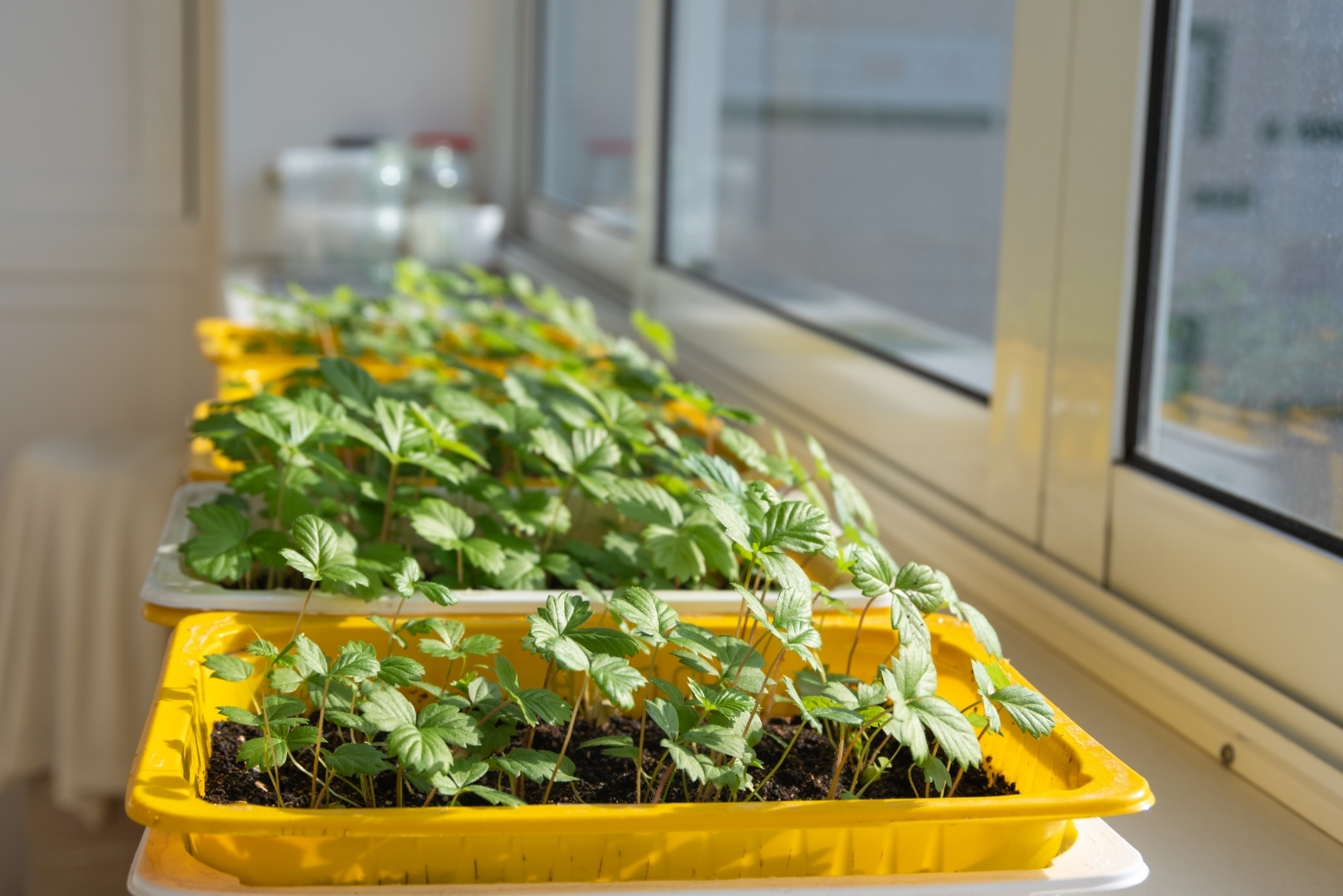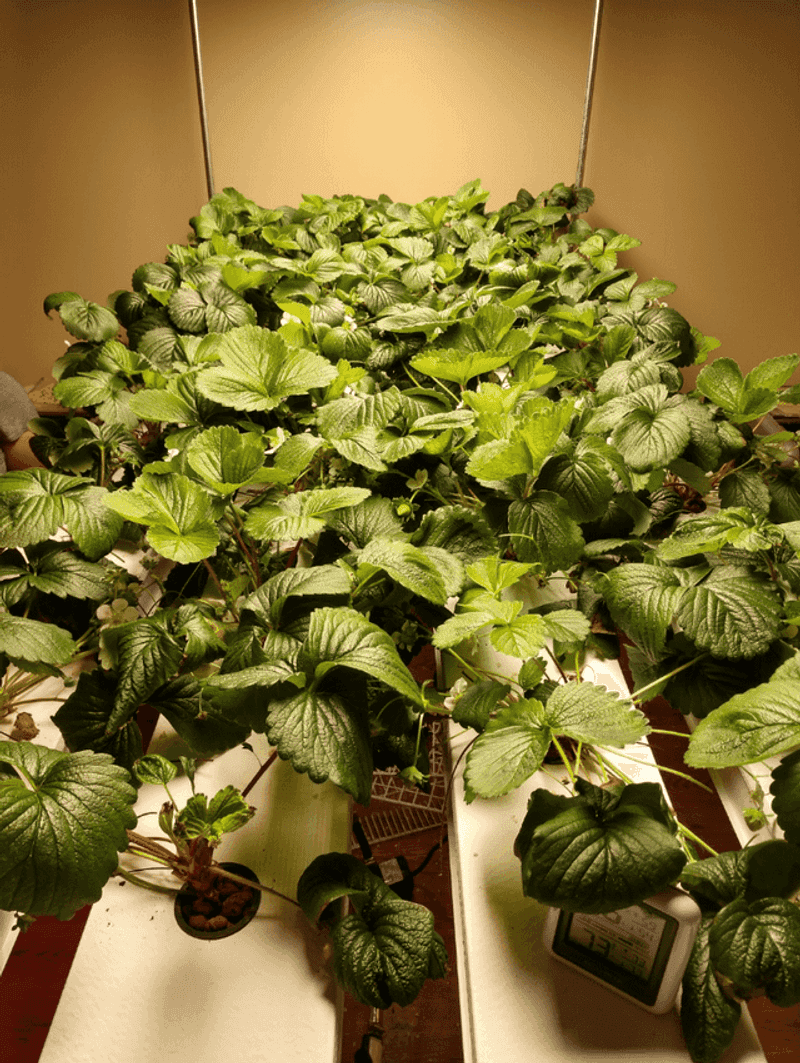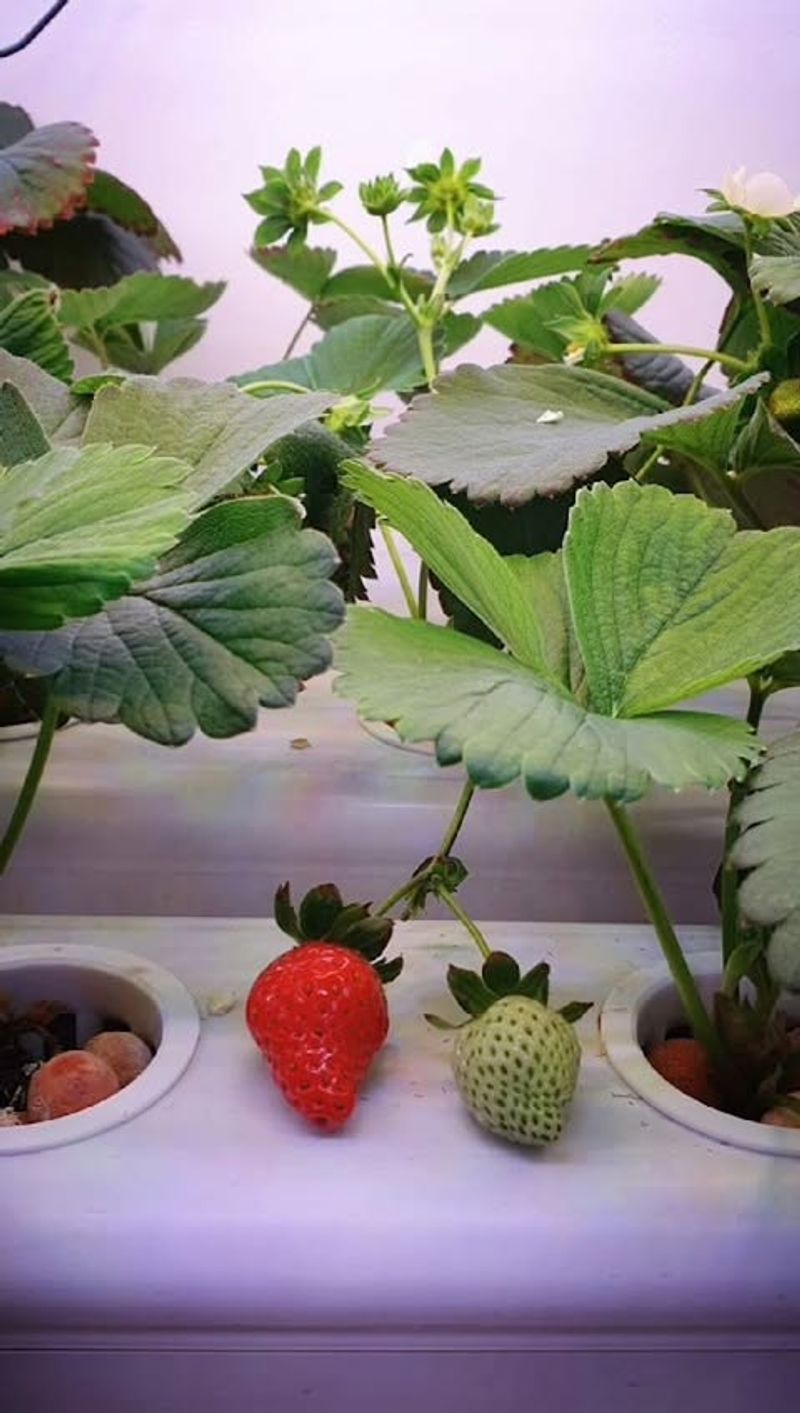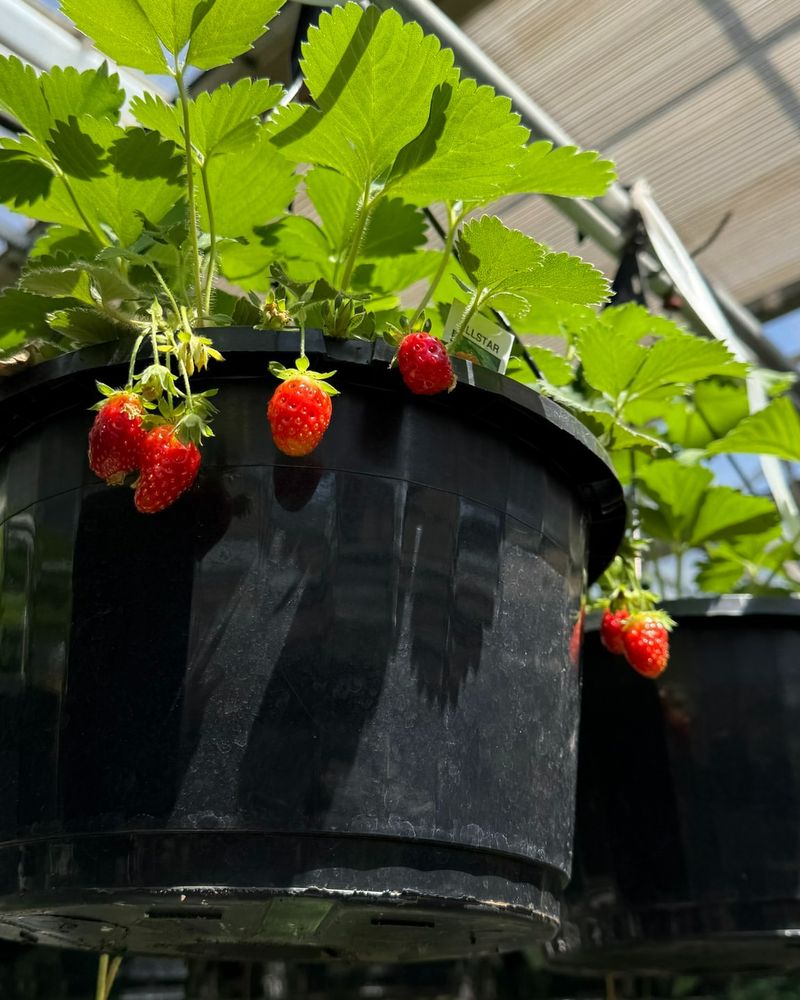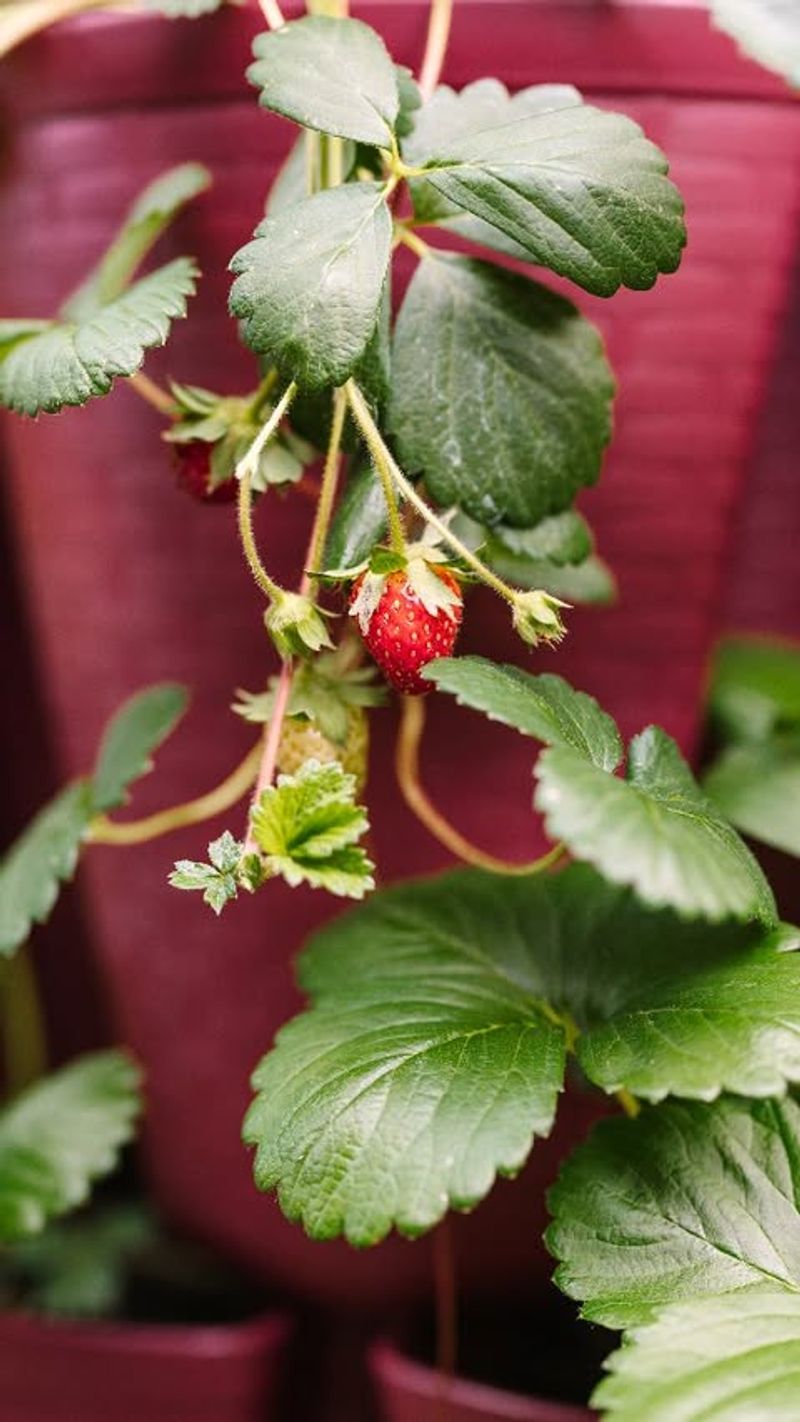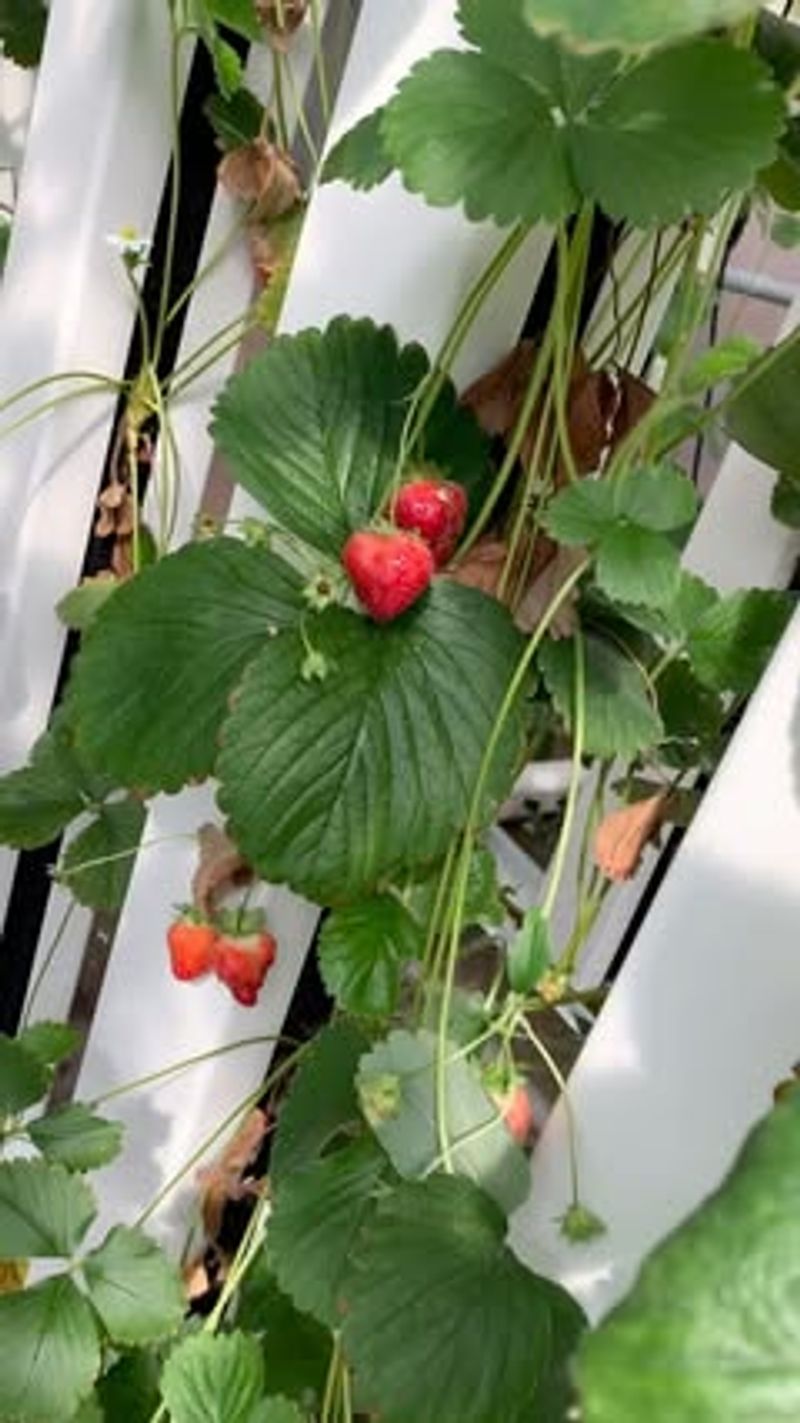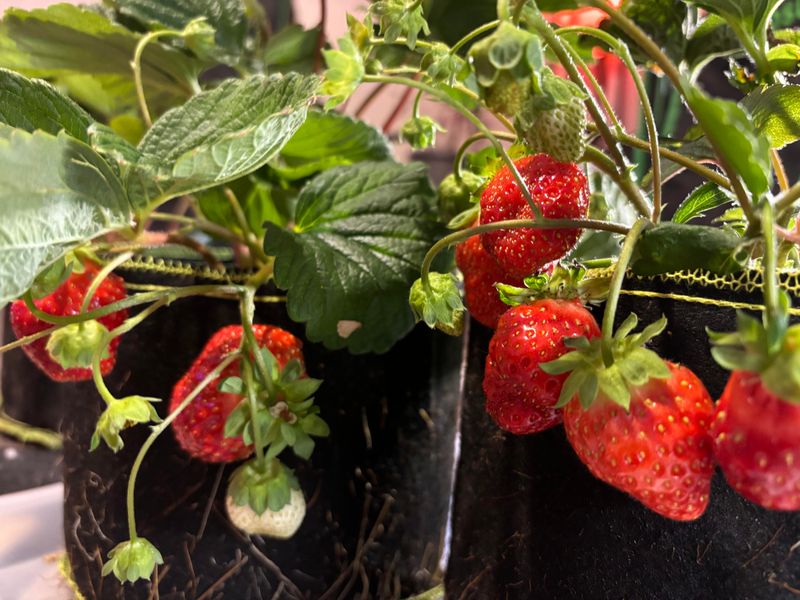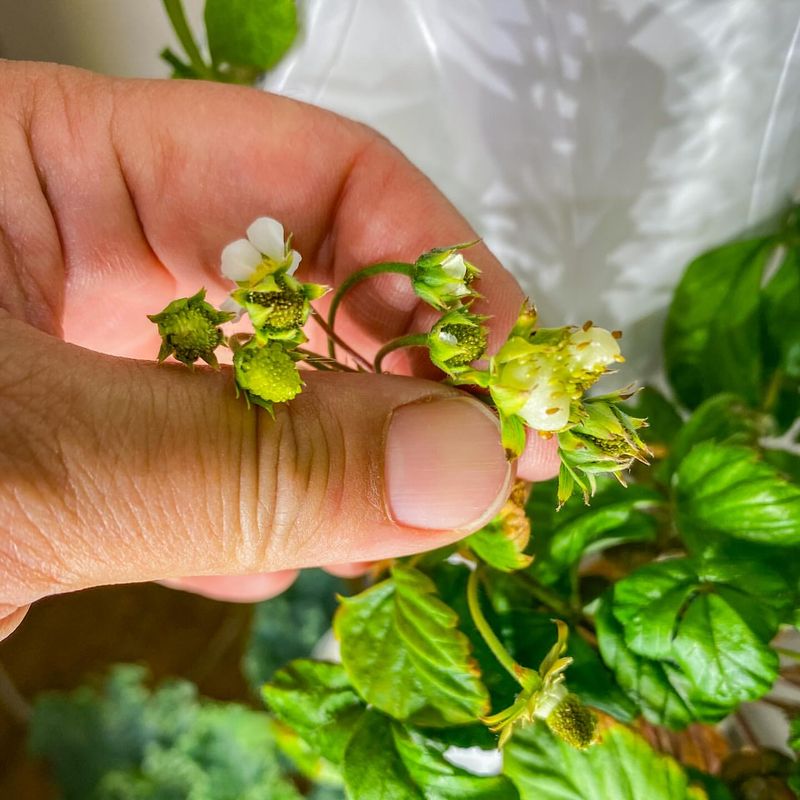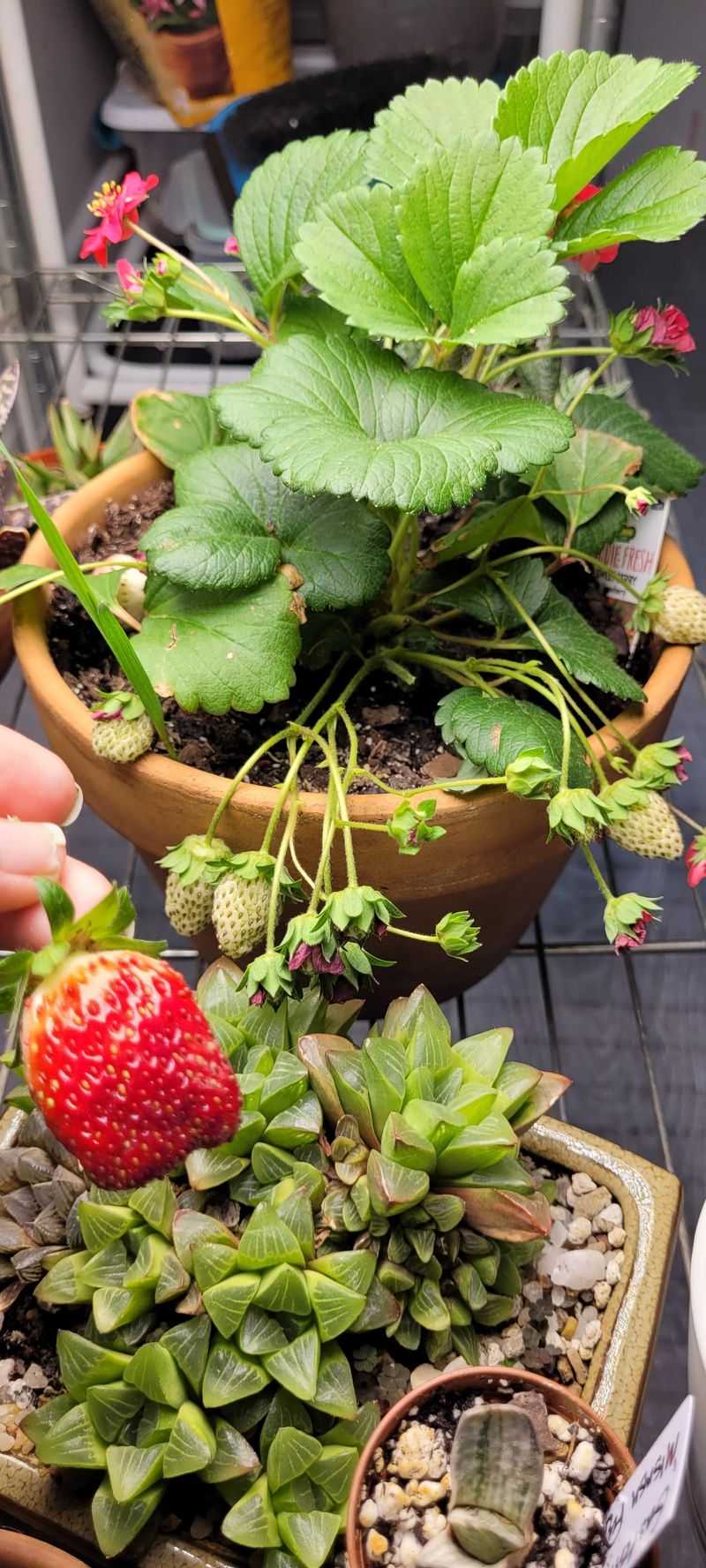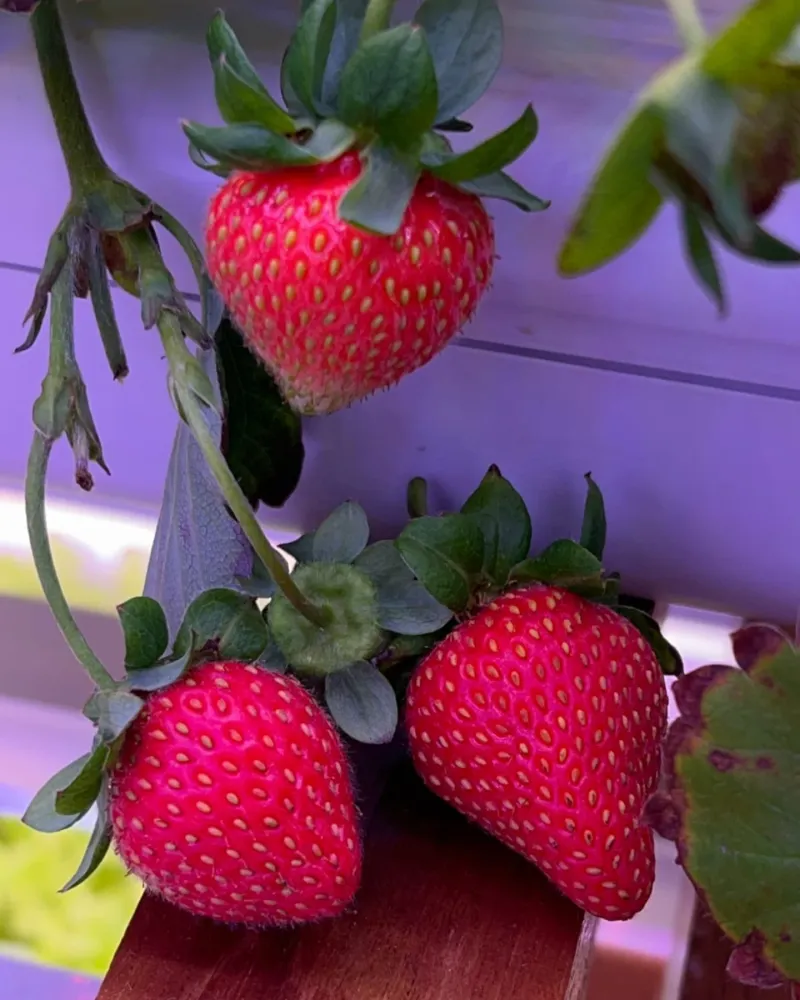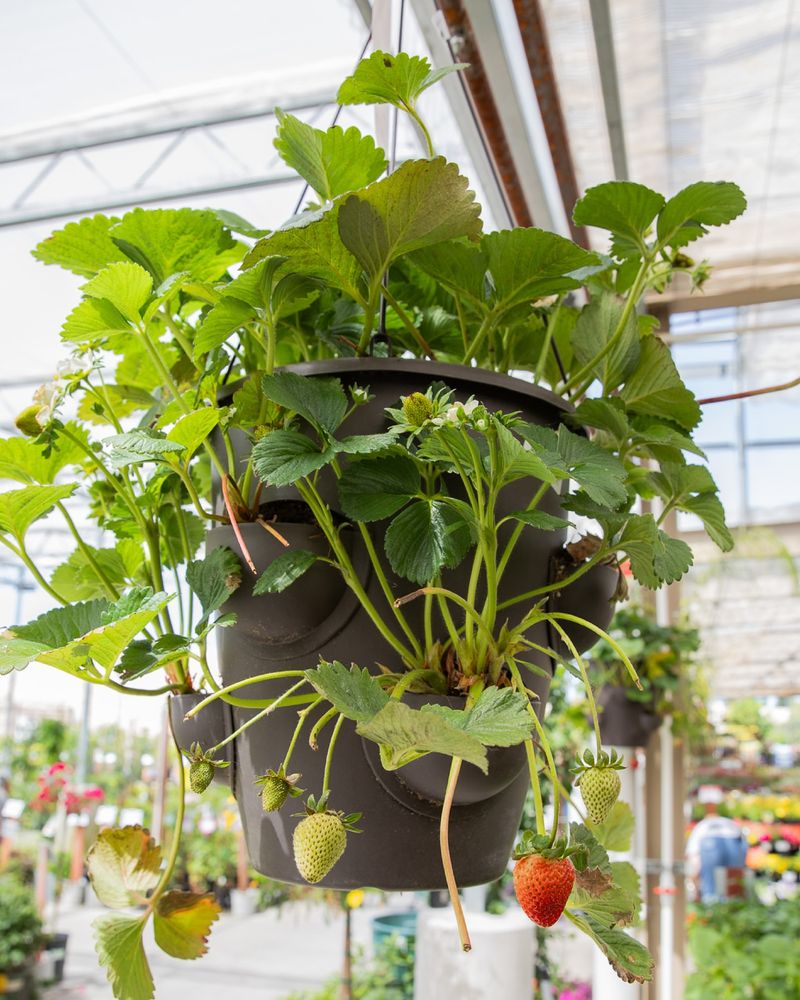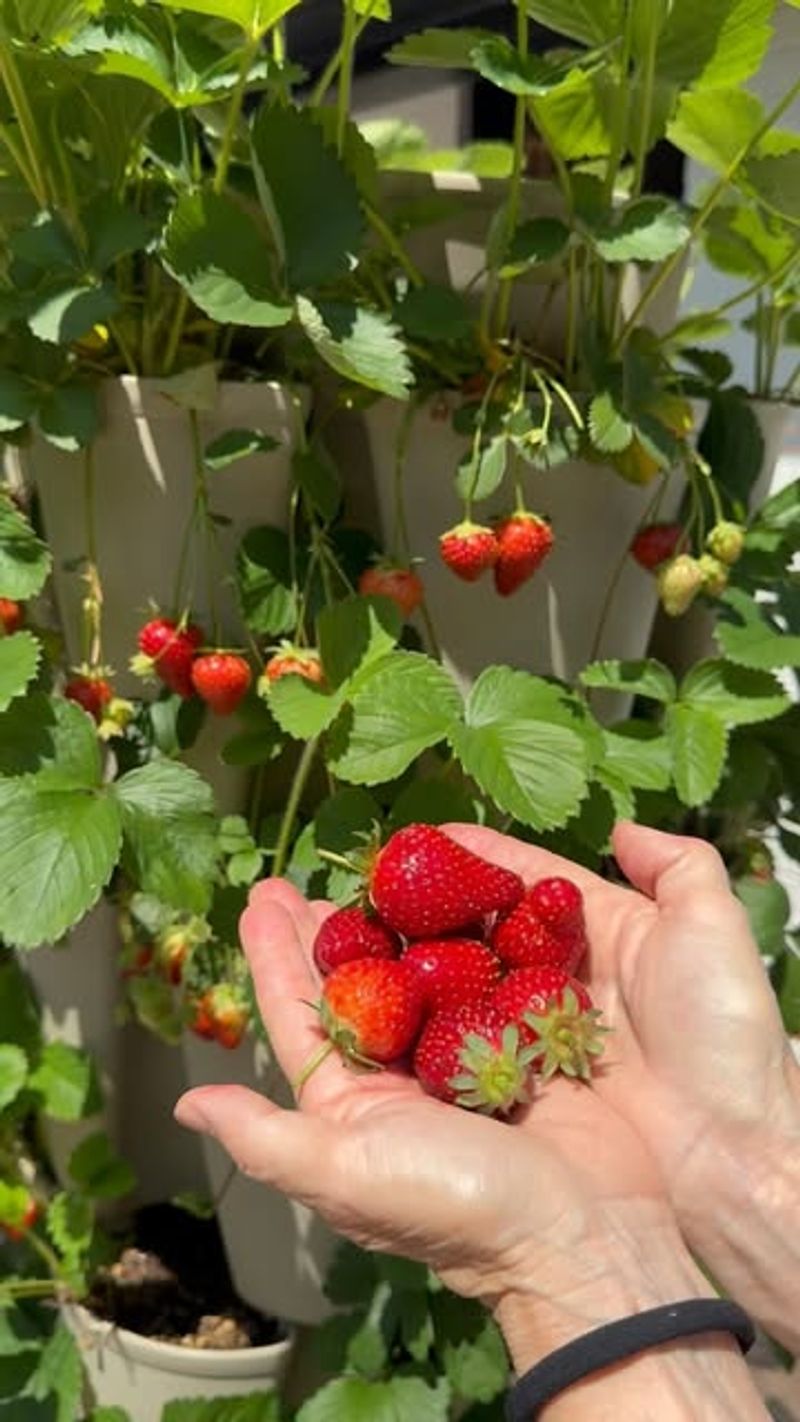Growing strawberries indoors during a Michigan winter is such a treat, especially when fresh berries are hard to come by. I started with a few small pots, and soon enough, they were producing sweet, juicy fruits right on my windowsill.
With the right light and care, indoor strawberries can thrive even when it’s freezing outside. It’s amazing to have fresh berries in the middle of winter without stepping outside.
I’ll share the tips that keep my indoor strawberry plants healthy and fruitful all season long.
1. Choose Cold-Hardy Varieties
Alpine and day-neutral varieties like ‘Seascape’ or ‘Tribute’ perform best in Michigan’s indoor winter conditions. These tough little plants don’t mind shorter daylight hours and adapt well to container life.
Michigan gardeners often find these varieties at local nurseries or through mail-order catalogs specializing in cold-climate plants. Their compact growth habit makes them perfect for windowsill gardens.
2. Provide Adequate Light
Strawberries need 6-8 hours of bright light daily to produce fruit. South-facing windows work wonders in Michigan homes, but most winter days won’t provide enough natural light.
Many Michigan indoor gardeners supplement with grow lights positioned 6-12 inches above plants. LED grow lights are energy-efficient and won’t add much to your winter heating bills while keeping those berries happy.
3. Select Proper Containers
Terra cotta pots with drainage holes work wonderfully for strawberries. The porous material prevents root rot, a common problem during Michigan’s humid indoor heating season.
For space-saving options, hanging baskets or vertical planters let Michigan apartment dwellers grow multiple plants in limited space. Just make sure whatever container you choose has excellent drainage to prevent waterlogged roots.
4. Use Quality Potting Mix
Never use garden soil for indoor strawberries! A high-quality potting mix with added perlite creates the perfect growing medium for Michigan indoor berries. The extra drainage prevents root diseases during damp winter months.
Michigan garden centers offer specialty berry mixes, but any good potting soil with a slightly acidic pH works well. Add a handful of compost to boost fertility without chemical fertilizers.
5. Maintain Proper Temperature
Strawberries prefer temperatures between 65-75°F during the day and slightly cooler at night. Most Michigan homes maintain these temperatures naturally during winter heating season.
Keep plants away from drafty windows and heating vents where Michigan’s bitter cold or dry heat might stress them. A cool sunroom that doesn’t freeze offers ideal conditions for mimicking their natural winter cycle.
6. Water Carefully
Overwatering kills indoor strawberries faster than anything else! In Michigan’s dry winter indoor environment, check moisture levels by sticking your finger an inch into the soil before watering.
Many Michigan growers place saucers under pots to catch excess water, but never let plants sit in standing water. Water thoroughly until it drains from the bottom, then empty those saucers to prevent root rot.
7. Pollinate By Hand
Without Michigan’s summer breezes and busy bees, indoor strawberries need help pollinating. Gently shake flowering plants daily or use a small paintbrush to transfer pollen between flowers.
Michigan gardeners often make this a morning ritual while enjoying their coffee. The simple act of brushing from flower to flower mimics bee activity and significantly increases your berry yield during those snowy months.
8. Fertilize Moderately
Indoor strawberries need less fertilizer than outdoor plants. Apply a half-strength liquid organic fertilizer formulated for berries every 3-4 weeks during Michigan’s winter growing season.
Many Michigan garden shops carry specialized berry fertilizers with the right nutrient balance. Avoid high-nitrogen formulas that produce lush leaves but few berries – look for higher phosphorus content instead.
9. Prevent Pest Problems
Michigan’s indoor winter environment can still harbor spider mites and aphids. Inspect plants weekly, paying special attention to leaf undersides where pests hide.
Many Michigan gardeners keep neem oil spray ready for early intervention. Increasing humidity around plants with pebble trays helps discourage spider mites, which thrive in the dry air common in Michigan winter homes.
10. Rotate Fruiting Plants
Even with grow lights, Michigan’s winter sunlight comes at an angle. Rotate containers weekly to ensure even growth and prevent plants from leaning toward light sources.
Smart Michigan growers mark one side of their containers to track rotation. This simple habit ensures all sides receive equal light exposure during those short winter days, resulting in stronger plants and better berry production.
11. Harvest Regularly
Pick berries as soon as they’re fully red – waiting too long invites mold in Michigan’s indoor winter environment. Regular harvesting encourages plants to produce more fruit throughout the season.
Michigan families often make harvesting a fun winter activity for kids. The yield from indoor plants won’t match summer gardens, but the joy of fresh-picked berries during a Michigan blizzard makes every berry special!

